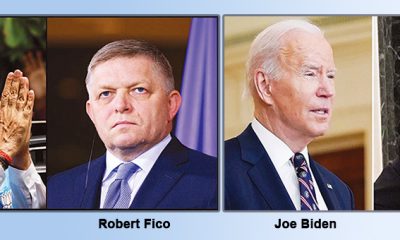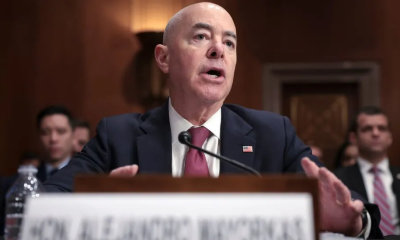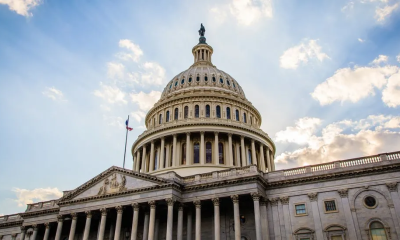Features
The Republicans
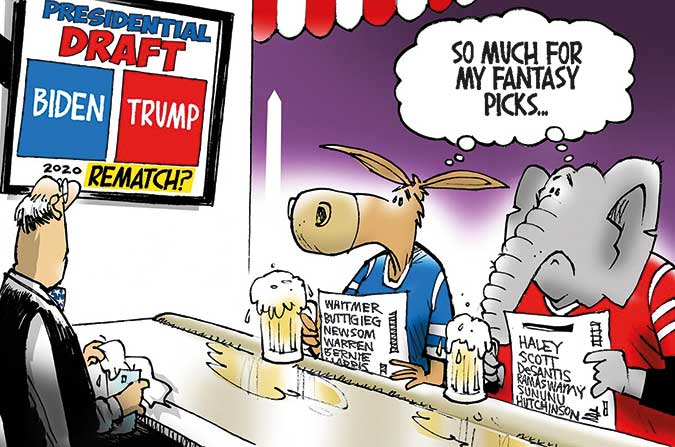
CANDIDATES FOR THE US PRESIDENCY IN 2024 PART 1
by Vijaya Chandrasoma
Many political pundits believe that the choice for the contestants for the 2024 presidential elections has already been decided by the American electorate, that it will be a Trump v. Biden repeat of the 2020 election. This is a most unrealistic projection. It’s only May 2023, the primary seasons have not yet begun and the spectrum of the political colors of the nation, from deep-blue Woke to deep-red neo-Nazi, can change beyond recognition in 18 months. So really, nothing has been decided. The race is wide open.
Besides, there is an element of doubt if both these candidates, already over the current US life-expectancy rate for white men of 76.4 years, will even be alive in November 2024. Also, obesity is a major cause of death for white men. These are established facts; they do not disclose any personal hopes.
The Republican Party has a few candidates who have already announced their presidential ambitions. The list is headed by twice impeached former President Trump, a serial loser who has, during his administration from 2016 to 2020, seen his Party lose its majority in the Senate, perform abysmally in the House midterms in 2018, and lose the 2020 Presidency to President Biden by a landslide.
Trump, who has been convicted, arrested and under investigation for numerous felonies, including espionage and sedition, is still amazingly the Republican front runner. He continues to spew the Big Lie, that the 2020 election was stolen from him, a lie believed by 52% of Republicans against all evidence to the contrary,
Other Republicans who have announced their candidature for nomination claim they also represent the Trump agenda, without Trump’s criminal and personal baggage. They are: Florida Governor Ron DeSantis, currently second to Trump in the polls by over 30% points, is running a sort of Trump-like campaign, offering a more effective and less flamboyant continuation of Trump’s authoritarian white supremacist policies. He is trying to win the support of moderate Republicans and a section of Trump’s base, who may be showing signs of antipathy in the face of his continuing vulgarity and criminal behavior. This strategy requires him, and other candidates, to be publicly critical of Trump and his transgressions, without overly alienating his base, and so position themselves as more electable alternatives. A task of formidable nuance.
The only other credible announced contender is former South Carolina Governor, Nikki Haley. She presently runs 40% behind Trump in the polls. The public shifting of her views of Trump after the January 6 insurrection threatens her chances as a viable candidate.
There are many other announced and “thinking about it” candidates, ready to jump in if the Trump balloon bursts. Not an impossibility, as there are a number of reasons for such a collapse, mainly investigations against him on multiple felonies. Conviction of Trump in any of these cases, which will probably be concluded before November 2024, could disqualify his candidacy.
In that event, the fortunes of DeSantis, Haley and a host of other Republican hopefuls will take a significant upward turn. Also, there is a distinct possibility that a moderate Republican, of the mold of 2008 presidential hopeful, Senator John McCain, may vie for the Republican nomination. If such a Republican wins the nomination, America will finally wake up from the political nightmare of eight years of racism, cruelty and criminal incompetence of the Trump years.
As Dr. Martin Luther King wrote from Birmingham jail in April 1963, “Injustice anywhere is a threat to justice everywhere. We are caught in an inescapable network of mutuality, tied in a single garment of destiny. Whatever affects one directly, affects all indirectly”.
A win for the Republicans in 2024 will capture us all in an inescapable network of intransigent enmity, which will continue to threaten the very essence of our freedoms and our democracy.
There are numerous domestic and international issues which Trump or the Republican who wins the White House will continue, issues which will take us back to the criminal incompetence and unconstitutional behavior of the previous Trump administration, which very nearly brought about the end of our democracy.
The current wafer-thin Republican majority in the House and the Trump-packed Supreme Court have already given us a glimpse of their future radical right-wing intentions if they win the presidency in 2024, especially if that winner is Trump.
Domestic Issues
The Trump-packed Supreme Court fired the first Republican salvo across the bows of democracy when it overturned Roe v. Wade, which had, in 1973, ruled that the Constitution of the United States protects a pregnant woman’s liberty to have an abortion. The current Supreme Court ruled, in June 2022, that abortion be only permitted according to the laws of individual states. The laws in some conservative, Christian states do not permit abortion, even with exceptions for “rape, incest or the safety of the mother”, so the new ruling seriously compromises the reproductive freedom of women, especially the black, the brown-skinned immigrants and the poor.
There is no doubt that a future Federal Government controlled by Republicans will impose a national ban on abortion. America will then return to the good old days of illegal, “coat hanger” abortions, dangerous to the health of both the mother and the fetus.
Trump and the Republican Party have opinions about climate change completely at odds with those of 97% of the scientific community. The first act of Trump when he took over the presidency in 2017 was to withdraw the US from the 195-nation backed Paris Climate Agreement, calling climate change a “hoax’’. Trump continued with US reliance on fossil fuels, resisting the development of renewable sources of energy, like solar, wind and ocean.
President Biden has since rejoined the Paris Accord, but a future Republican president will undoubtedly revert to reliance to fossil fuels.The regulations imposed by President Obama to curb oil companies and other corporate polluters from contaminating the environment were immediately deregulated by Trump in 2017.
These regulations have been reimposed by President Biden, but there is no doubt that a future Republican administration will revert to deregulation, for which they will be amply compensated by their grateful Masters, the Big Oil companies and other corporate polluters.
Trump, soon after his inauguration, unveiled a new tax cut amounting to $ 1.5 trillion in 2017, billed as “a middle-class miracle” by the Republicans. In their book “The Triumph of Injustice,” Berkeley economists, Emmanuel Saez and Gabriel Zucman, argue that Trump’s tax cut “helped billionaires to pay a lower tax rate than the working class for the first time in history”. In the 1950s, during the administration of Republican President Eisenhower, 0.1% of the nation’s richest and corporations paid as much as 60% in taxes, which made for a thriving middle class. During the Reagan years in the 1980s, that rate had plummeted to 40%, which saw the beginning of the erosion of that prosperous middle class.
Trump’s 2017 tax cuts reduced the tax rates payable by the 0.1% of the wealthiest and corporations to 20%, which made the income and wealth gap between the billionaires and 90% of the poorest section of the population at its highest levels in history. And such low taxes to benefit the super-wealthy are likely to continue under future Republican administrations.
President Biden in a recent speech warned that white supremacy “is the most dangerous domestic terrorist threat to our homeland, and that “sinister forces” embraced by Trump and his white supremacist base “are trying to reverse generations of racial progress in America”.
A Republican win in 2024 will see an increase in racial discrimination, including violence against blacks and non-white immigrants.
Gun violence is the scourge of America. So far, there have been over 200 mass shootings in 2023, and we are only in the middle of May. Deaths caused by gun violence so far this year exceed 15,600, including 658 toddlers and children killed and over 1,600 injured. Gun violence is now the leading cause of death of children in the USA.
In spite of over 40,000 people being killed every year by gun violence, the Republican Party has resisted the imposition of any gun control laws. Anyone over 18 can go to their local Walmart’s, buy their groceries, stroll down to the gun shop and buy a military style assault rifle/pistol, (even an AR 15, the popular choice of today’s shooters), over the counter. No questions asked, no waiting time, no background check, easy-peasy.
Any future Republican administration, totally bought and paid for by the gun lobby, the military industrial complex represented by the National Rifle Association (NRA), will continue to resist any laws preventing the free purchase of guns and ammunition.
Obamacare, the Affordable Care Act which provides health insurance for most Americans, will be repealed by a future Republican administration, leaving over 50 million Americans without health insurance.
The Republican Party policy about education, already the law in many states like Florida and Virginia, is to ban the reading and teaching the history of the country, including the brutality of the genocide of native Americans and 400 years of slavery. They feel that such education will create feelings of guilt among white children because of the atrocities committed by their ancestors. A most racist and shortsighted strategy, against the First Amendment, as blindness to the facts of history will only succeed in such history being repeated.
In contrast, a mandatory class in modern early grade education in Germany is the history of the horrors of Nazism and the holocaust, with the slogan, “Never Again”.
The rights of the LGBTQ community are already being trampled in states like Florida, Alabama and many other “red” states. These harassment’s will translate into national laws restricting the rights of that community under a Republican administration.
Immigration continues to be the most difficult problem faced by the USA over the last few decades. The economic and political crises in countries like Venezuela and Guatemala have forced their citizens to flee their homelands, as their liberty and lives were in imminent danger, a legal reason to seek asylum according to the laws of the United States. Unfortunately, the sheer numbers of immigrants make it impossible for US immigration authorities to process all applications expeditiously, because of a lack of resources. Various administrations have tried to arrive at humane solutions, which have so far met with very limited success.
Under the Trump administration, immigration authorities were encouraged to take inhumane and cruel measures to curb this flood of immigration, including separation of children from their parents. The conditions of the shelters provided for these asylum seekers were comparable to those of German WWII concentration camps.
Biden’s administration has been trying to increase the facilities to deal with this problem, with limited success. The immigration crisis at the southern border will only get better with an improvement of living conditions in the home countries of the immigrants.
A new Republican administration will revert to the inhumane measures practiced by the Trump administration.
These are some of the domestic injustices we could expect with the election of a Republican president in 2024. There will be more, which will provide more hardship and injustice to all but the corporations, the NRA and the billionaires, whose numbers will increase with the entry into its fold of a large number of corrupt, MAGA Republican politicians.
International Issues.
Trump’s followers have already indicated that they will stop giving military aid to the Ukraine in their war against Russian aggression. That will mean the end of the sovereignty of Ukraine, and open the path to Putin’s dream of the glory days of the Union of Soviet Socialist Republics. It will also hasten the crumbling of NATO, as Putin, with no retaliation from Trump’s America, will invade Poland, Hungary and other members of NATO, who were previously under Soviet rule.
China will be allowed to invade Taiwan and possibly other sovereign nations in the China Sea, taking geopolitical control of the region, again with no military opposition from the USA.
The election of a Republican to the presidency, especially if that Republican is Trump, will enable the Party to complete the job Trump started on January 6, 2021, to bring about the termination of the Constitution and end democracy in the oldest democracy in the world. And President Trump will start his second term with a lily-white record, having pardoned himself and his followers of all the treasonous and vicious crimes committed during his first term.
Features
Sri Lanka’s Foreign Policy amid Geopolitical Transformations: 1990-2024 – Part I
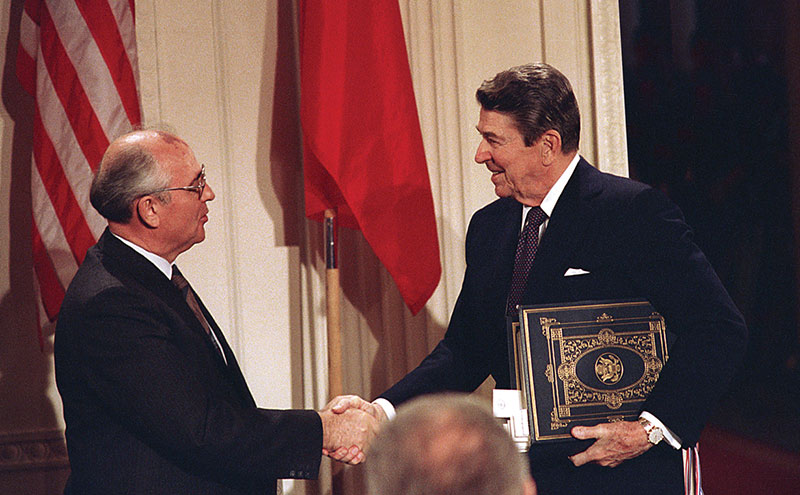
Sri Lanka’s survival and independence have historically depended on accurately identifying foreign policy priorities, selecting viable strategies as a small island state, and advancing them with prudence. This requires an objective assessment of the shifting geopolitical landscape through a distinctly Sri Lankan strategic lens. Consequently, foreign policy has been central to Sri Lanka’s statecraft, warranted by its pivotal location in the Indian Ocean—adjacent to South Asia yet separated by a narrow stretch of water.
Amid pivotal geopolitical transformations in motion across South Asia, in the Indian Ocean, and beyond, the formulation and implementation of Sri Lanka’s foreign policy has never been more critical to its national security. Despite the pressing need for a cohesive policy framework, Sri Lanka’s foreign policy, over the past few decades, has struggled to effectively respond to the challenges posed by shifting geopolitical dynamics. This article examines the evolution of Sri Lanka’s foreign policy and its inconsistencies amid shifting geopolitical dynamics since the end of the Cold War.
First
, the article examines geopolitical shifts in three key spaces—South Asia, the Indian Ocean, and the global arena—since the end of the Cold War, from Sri Lanka’s strategic perspective. Building on this, second, it analyses Sri Lanka’s foreign policy responses, emphasising its role as a key instrument of statecraft. Third, it explores the link between Sri Lanka’s foreign policy dilemmas during this period and the ongoing crisis of the post-colonial state. Finally, the article concludes that while geopolitical constraints persist, Sri Lanka’s ability to adopt a more proactive foreign policy depends on internal political and economic reforms that strengthen democracy and inclusivity.
Shifting South Asian Strategic Dynamics
Geopolitical concerns in South Asia—Sri Lanka’s immediate sphere—take precedence, as the country is inherently tied to the Indo-centric South Asian socio-cultural milieu. Sri Lanka’s foreign policy has long faced challenges in navigating its relationship with India, conditioned by a perceived disparity in power capabilities between the two countries. This dynamic has made the ‘India factor’ a persistent consideration in Sri Lanka’s strategic thinking. As Ivor Jennings observed in 1951, ‘India thus appears as a friendly but potentially dangerous neighbour, to whom one must be polite but a little distant’ (Jennings, 1951, 113).The importance of managing the ‘India Factor’ in Sri Lankan foreign policy has grown further with India’s advancements in military strength, economic development, and the knowledge industry, positioning it as a rising global great power on Sri Lanka’s doorstep.
India’s Strategic Rise
Over the past three decades, South Asia’s geopolitical landscape has undergone a profound transformation, driven by India’s strategic rise as a global great power. Barry Buzan (2002:2) foresees this shift within the South Asian regional system as a transition from asymmetric bipolarity to India-centric unipolarity. India’s continuous military advancements have elevated it to the fourth position in the Global Firepower (GFP) index, highlighting its formidable conventional war-making capabilities across land, sea, and air (Global Firepower, 2024). It currently lays claims to being the world’s third-largest military, the fourth-largest Air Force, and the fifth-largest Navy.
India consistently ranks among the fastest-growing major economies, often surpassing the global average. According to Forbes India, India is projected to be the world’s fifth-largest economy in 2025, with a real GDP growth rate of 6.5% (Forbes, January 10, 2025). India’s strategic ascendance is increasingly driven by its advancements in the knowledge industry. The country is actively embracing the Fourth Industrial Revolution (4IR) and emerging as the Digital Public Infrastructure (DPI) hub of South Asia. However, India’s rise has a paradoxical impact on its neighbours. On one hand, it offers them an opportunity to integrate into a rapidly expanding economic engine. On the other, it heightens concerns over India’s dominance, leaving them feeling increasingly overshadowed by the regional giant.
Despite significant geo-strategic transformations, the longstanding antagonism and strategic rivalry between India and Pakistan have persisted into the new millennium, continuing to shape South Asia’s security landscape. Born in 1947 amid mutual hostility, the two countries remained locked in a multi-dimensional conflict encompassing territorial disputes, power equilibrium, threat perceptions, accusations of interference in each other’s domestic affairs, and divergent foreign policy approaches. The acquisition of nuclear weapons by both countries in 1998 added a new dimension to their rivalry.
The SAARC process has been a notable casualty of the enduring Indo-Pakistani rivalry. Since India’s boycott of the Islamabad Summit in response to the 2016 Uri attack in Kashmir, the SAARC process has remained in limbo. Countries like Sri Lanka, which seek to maintain equally amicable relations with both India and Pakistan, often find themselves in awkward positions due to the ongoing rivalry between them. One of the key challenges for Sri Lanka’s foreign policy is maintaining strong relations with Pakistan while ensuring its ties with India remain unaffected. India now actively promotes regional cooperation bodies in South Asia, excluding Pakistan, favouring broader frameworks such as BIMSTEC. While Sri Lanka can benefit greatly from engaging with these regional initiatives, it must carefully navigate its involvement to avoid inadvertently aligning with India’s efforts to contain Pakistan. Maintaining this balance will require sharp diplomatic acumen.
India’s expansive naval strategy, especially its development of onshore naval infrastructure, has positioned Sri Lanka within its maritime sphere of influence. As part of the Maritime Infrastructure Perspective Plan (MIPP) launched in 2015 to enhance operational readiness and surveillance capabilities, India is developing an alternative nuclear submarine base for the Eastern Command under Project Varsha (Deccan Chronicle, 22.11.2016). This base is located in Rambilli village, 50 km southwest of Visakhapatnam and 1,200 km from Colombo (Chang, 2024). Additionally, INS Dega, the naval air base at Visakhapatnam, is being expanded to accommodate Vikrant’s MiG-29K and Tejas fighter aircraft.
Another key strategic development in India’s ascent that warrants serious attention in Sri Lanka’s foreign policy formulation is India’s progress in missile delivery systems (ICBMs and SLBMs) and nuclear-powered submarines. In 1998, India made it clear that its future nuclear deterrence would be based on a nuclear triad consisting of land-based Intercontinental Ballistic Missiles (ICBMs), submarine-launched ballistic missiles (SLBMs), and strategic bombers (Rehman, 2015). Since then, India has steadily advanced in this direction. The expansion of India’s missile delivery systems, including ICBMs and SLBMs, serves as a reminder that Sri Lanka exists under the strategic shadow of a major global power.
The development of India’s nuclear-powered ballistic missile submarines (SSBNs) accelerated after 2016. The first in this class, INS Arihant (S2), was commissioned in August 2016, followed by the launch of INS Arighat in November 2021. Designed for strategic deterrence, INS Arighat is equipped to carry the Sagarika K-4 submarine-launched ballistic missiles (SLBMs), with a range of 3,500 kilometers, as well as the K-5, a long-range SLBM capable of reaching 5,000 kilometers. The submarine is based at INS Varsha (Deb, 2021).
India has significantly advanced its missile delivery systems, improving both their range and precision. In 2021, it successfully tested the Agni-5, a nuclear-capable intercontinental ballistic missile with a range of 5,000 kilometers. On March 11, 2024, India joined the ranks of global powers possessing Multiple Independently Targetable Re-entry Vehicle (MIRV) technology (The Hindu, January 4, 2022). These advancements elevate the Bay of Bengal as a pivotal arena in the naval competition between India and China, carrying profound political and strategic implications for Sri Lanka, which seeks to maintain equally friendly relations with both countries.
Further, India’s remarkable strides in space research have cemented its status as a global power. A defining moment in this journey was the historic lunar landing on 23 August 2023, when Chandrayaan-3 successfully deployed two robotic marvels: the Vikram lander and its companion rover, Pragyan. They made a graceful touchdown in the Moon’s southern polar region, making India the fourth nation to achieve a successful lunar landing. This milestone has further reinforced India’s position as an emerging great power, enhancing its credentials to assert itself more confidently in South Asian, Indian Ocean, and global power dynamics.
India envisions a stable and secure South Asia as essential to its emergence as a great power in the Indian Ocean and global strategic arenas. However, it does not consider Pakistan to be a part of this stability that it seeks. Accordingly, when India launched the ‘Neighbourhood First Policy’ in 2008 to strengthen regional ties, Pakistan was excluded. India’s ‘Neighbourhood First Policy’ gained renewed momentum after 2015 under Prime Minister Narendra Modi. His approach to South Asia is embedded in a broader narrative emphasising the deep-rooted cultural, economic, and social exchanges between India and other South Asian countries over centuries. India’s promotion of heritage tourism, particularly the ‘Ramayana Trail’ in Sri Lanka, should be viewed through this strategic lens as part of its broader strategic narrative.
Evolving Indian Ocean Geo-political Dynamics
The Indian Ocean constitutes the next geopolitical frame for Sri Lanka’s foreign policy. The Indian Ocean is a huge bay bordered by the Afro-Asian landmass and Australia on three sides and the South Asian peninsula extends into the Indian Ocean basin centrally. Situated at the southern tip of South Asia, Sri Lanka extends strategically into the heart of the Indian Ocean, shaping its geopolitical significance and strategic imperatives for maintaining sovereignty. Historically, Sri Lanka has often been caught in the power struggles of extra-regional actors in the Indian Ocean, repeatedly at the expense of its independence.
Sri Lanka’s leadership at the time of independence was acutely aware of the strategic significance of the Indian Ocean for the nation’s survival. The first Prime Minister D.S. Senanayake, who was also the Minister of Defence and External Affair, stated in Parliament that: “We are in a dangerous position, because we are on one of the strategic highways of the world. The country that captures Ceylon would dominate the Indian Ocean. Nor is it only a question of protecting ourselves against invasion and air attack. If we have no imports for three months, we would starve, and we have therefore to protect our sea and air communications” (Hansard’s Parliamentary Debates, House of Representative. Vol. I, 1 December 1947, c. 444)
As naval competition between superpowers during the Cold War extended to the Indian Ocean, following the British naval withdrawal in the late 1960s, Sri Lanka, under Prime Minister Sirimavo Bandaranaike, played a key diplomatic role in keeping the region free from extra-regional naval rivalry by mobilising the countries that were members of the Non-Aligned Movement (NAM). In 1971, Sri Lanka sponsored a proposal at the UN General Assembly to establish the Indian Ocean as a Peace Zone (IOPZ). While the initiative initially gained traction, it stalled at the committee stage and ultimately lost momentum.
The maritime security architecture of the Indian Ocean entered a new phase after the end of the Cold War. The United States became the single superpower in the Indian Ocean with an ocean-wide naval presence bolstered by the fully fledged Diego Garcia base. Correspondingly, the regional strategic linkages that evolved in the context of the Cold War were eventually dismantled, giving way to new strategic relationships. Additionally, three key developments with profound implications for Sri Lanka should be noted: India’s projection of political and naval power into the deeper Indian Ocean, China’s rapid economic and military rise in the region, and the entry of other extra-regional powers into Indian Ocean politics. Although Sri Lanka adopted a broader strategic perspective and a more proactive foreign policy in the 1970s, its approach to geopolitical developments in the Indian Ocean in the post-Cold War era became increasingly shaped by domestic challenges—particularly countering the LTTE threat and addressing post-war exigencies.
India’s Expanding Naval Diplomatic Role in the Indian Ocean
Parallel to its strategic rise, India has intensified its engagement in the broader strategic landscape of the Indian Ocean with renewed vigor. This expansion extends beyond its traditional focus on the South Asian strategic theatre, reflecting a more assertive and multidimensional approach to regional security, economic connectivity, and maritime diplomacy. India’s active participation in multilateral security frameworks, infrastructure investments in critical maritime hubs and strategic alignments with major global powers signify its role in the changing naval security architecture of the Indian Ocean. India’s shifting strategic posture in the Indian Ocean is reflected in the 2015 strategy document Ensuring Secure Seas: Indian Maritime Security Strategy. It broadens the definition of India’s maritime neighbors beyond those sharing maritime boundaries to include all nations within the Indian Ocean region (Ensuring Secure Seas, p. 23).
In 2015, Indian Prime Minister Narendra Modi launched his signature Indian Ocean diplomacy initiative, Security and Growth for All in the Region (SAGAR) to foster trust and transparency, uphold international maritime norms, respect mutual interests, resolve disputes peacefully, and enhance maritime cooperation. Strategic engagement with the littoral states in the Indian Ocean region, especially Sri Lanka, the Maldives, Seychelles, and Mauritius and Madagascar has emerged as a key component of India’s Indian Ocean naval diplomacy.
The Seychelles archipelago, located approximately 600 miles east of the Diego Garcia base, holds particular significance in India’s maritime strategy. During Prime Minister Narendra Modi’s official visit to Seychelles in March 2015, India and Seychelles signed four agreements. A key strategic outcome of the visit was Seychelles’ agreement to lease Assumption Island, one of its 115 islands, to India—a move that reinforced Seychelles’ alignment with India’s broader naval diplomacy in the Indian Ocean
Similarly, Mauritius holds a central position in India’s naval diplomacy in the Indian Ocean. During Prime Minister Modi’s visit to Mauritius in March 2015, India signed a Memorandum of Understanding with Mauritius to establish a new base on North Agalega Island, a 12-kilometer-long and 1.5-kilometer-wide Island. The base is crucial for air and surface maritime patrols in the southwest Indian Ocean. It will also serve as an intelligence outpost. In September 2016, defense and security cooperation between India and Mauritius deepened alongside the signing of the ‘Comprehensive Economic Cooperation Partnership Agreement’ (CECPA).
India’s expanding strategic interests across the Indian Ocean are reflected in its growing economic, educational, and defense collaborations with Madagascar. In 2007, India established its first overseas listening post in northern Madagascar to monitor shipping activities and intercept marine communications in the Indian Ocean. This initiative provided India with a naval foothold near South Africa and key sea-lanes in the southwestern Indian Ocean. The significance of India’s defense ties with Madagascar is further highlighted by Madagascar’s participation in China’s Belt and Road Initiative (BRI). As a crucial hub along the Maritime Silk Road connecting Africa, Madagascar’s strategic importance is underscored in the broader geopolitical landscape.
Another element of India’s expanding naval diplomacy in the Indian Ocean is its participation in both unilateral and multilateral anti-piracy operations. India’s commitment to regional security was reinforced in 2008 when it established a ‘Strategic Partnership’ with Oman, securing berthing and replenishment facilities for its navy, along with a strategically significant listening post in the Western Indian Ocean. India’s naval presence in the Arabian Gulf gains additional significance amid reports of a new Chinese naval base in Djibouti and recent submarine deployments. Successful anti-piracy missions in the western Indian Ocean underscore India’s growing influence in the region’s evolving naval security architecture.
India increasingly views its vast Diaspora as a soft power tool to bolster its status as an Indian Ocean power. In June 2014, it launched the Mausam project to reinforce its cultural ties across the region, showcasing its heritage, traditions, and contributions to global arts, literature, cinema, yoga, and cuisine. This initiative complements India’s expanding naval diplomacy and strategic presence in the Indian Ocean. Over the years, it has established listening facilities, airfields, and port infrastructure in key locations such as northern Madagascar, Agaléga Island (Mauritius), and Assumption Island (Seychelles). This has led India Today to ask: “Could this mark the emergence of an Indian ‘String of Flowers’ to counter China’s ‘String of Pearls’?” (The be continued)
by Gamini Keerawella
Features
Greener Pastures, Mental Health and Deception in Marriage:
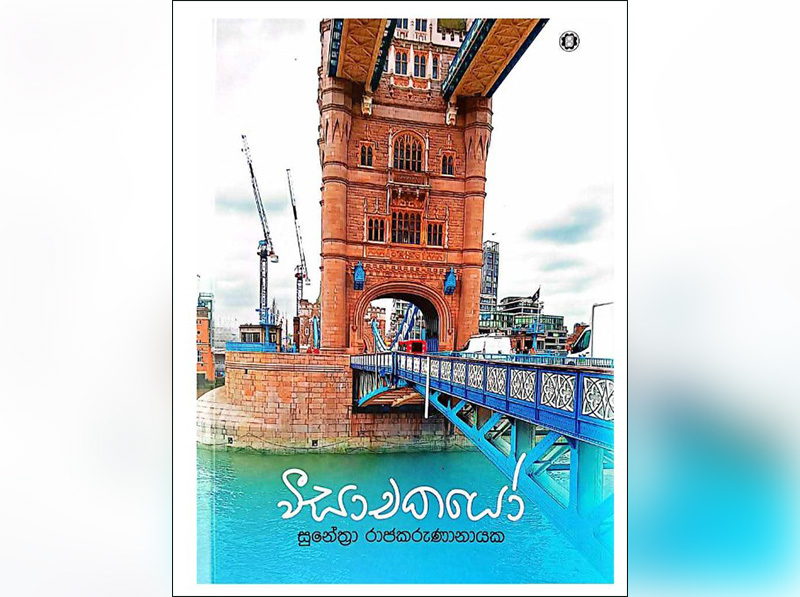
Exploring Sunethra Rajakarunanayake’s Visachakayo
Sunethra Rajakarunanayake’s Sinhala novel Visachakayo (published in 2023) is a thriller in its own sense due to its daring exploration of social themes that modern Sinhala writers fail to touch. To me, the novel is a mosaic that explores pressing issues that middle-class Sri Lankans go through in the 21st Century. The narrative is seen from the perspective of Akshara, a Tamil girl whom the reader first meets in an infamous ‘Visa Queue’ to get her passport to go to England.
Akshara lives with her grandmother ‘Ammamma’ and her aunt ‘Periyamma’ (the younger sister of her mother). Both Ammamma and Periyamma look after her in the absence of her mother, Chinthamani who passed away a long time ago. Akshara’s father lives in Jaffna, with the kids of the second marriage. Later, we are told that Akshara’s father had to marry the second wife due to the loss of his wife’s first husband, who was an LTTE cadre. The second marriage of men seems to be a common theme in the novel due to their commitments to the family as an act of duty and honour.
The most iconic character in the novel is Preethiraj, ‘the man with a big heart’ who functions as a father figure to the other characters in the novel. It is through Preethiraj’s memory that the reader becomes aware of sociological themes in the novel: displacement and immigration, the institution of marriage and mental health issues. Preethiraj (fondly known as Preethi) is the son of Pushpawathi, the second wife of Akshara’s grandfather. Preethi goes to Royal College, but he has to relocate to Jaffna in 1958. Preethi endures social injustice in both public and private spheres. His studious sister, a medical student, labels him as a ‘lunatic’, while his mother condemns him as the ‘odd one’.
The novel intersects between the three themes: immigration and displacement, mental health issues and the institution of marriage. Almost all the characters have to go through displacement, suffer from intricacies of love laws and marriage rules like in The God of Small Things by Arundathi Roy. The writer offers a nuanced analysis of these three themes. For example, take mental health issues. The novel portrays a spectrum of mental health issues, such as schizophrenia, psychosis, Othello Syndrome, depression, autism and even malingering. At times, the representation of such ailments is extremely sarcastic:
“Hm… Canadian citizenship is an easy solution to secure those opportunities. However, unless I am asked to intervene, I will not meddle with their affairs. The son of one of my friends was introduced to a pretty girl. They liked her, not because of her money, but because of her looks and her ability to play the piano. But later, they discovered she has schizophrenia. Now their son follows whatever she says to save the marriage. My friend says she has lost her son” (p.20).
“Those opportunities” refer to material wealth including money and property in Colombo. Here, Rajakarunanayake does not fail to capture the extreme materialism and consumerism. However, in general, her representation of human follies is extremely humane.
The title ‘Visachakayo’ is another interesting coinage that reflects the plight of Sri Lankans who migrate to the ‘global north’ in search of greener pastures. Akshara’s friend, Subhani, who has migrated to England, explains that the term ‘Visachaya’ captures the in-between status of immigrants who are waiting for PR in a foreign country. Subhani mockingly says that they are equal to beggars who beg for visas. Subhani’s coinage and other accounts of Sri Lankan immigrants in England, the novel shows how difficult it is for an immigrant from the ‘global south’ to fight for a living in a country like England where immigrants come to resolve their financial struggles back home.
The novel is an eye-opener in many ways. First, it is an attempt to bridge the gap caused by the Sinhala-Tamil ethnic strife. It is also a cultural mosaic that captures both the joys and sorrows of Sinhala, Tamil and Burgher families in Sri Lanka. The novel also delves into mental health issues, categorically tied to marriage, a daring task even for a seasoned writer. However, Rajakarunanayake’s writing style compels the reader to adopt a more humane and empathetic approach towards individuals grappling with mental health challenges at various stages of their lives. The linguistic technique of using ‘ne’ tag at the end of sentences creates a conversational tone, making the narrative as if it is a conversation between a therapist and a patient. Her writing style also resembles that of Sri Lankan and Indian diasporic writers, a style that is used when writing about the motherland in exile, of which food becomes a critical trope in the narrative that unites the characters who live in exile.
Rajakarunanayake has done a commendable job in the representation of social issues, making this novel a must-read for anyone who is interested in researching social dynamics of contemporary Sri Lanka. It soon needs to be translated into English which will offer a unique experience to Sri Lankan English and international readers. A good book is something that affects the reader. Visachakayo has this quality, and it makes the reader revisit the past, reflect on the present and anticipate the future with hope for humanity just as Preethi does regardless of hardships he endured in the theatre of life.
By C. M. Arsakulasuriya
Features
A strategy for Mahaweli authority to meet future challenges amidst moves to close it down
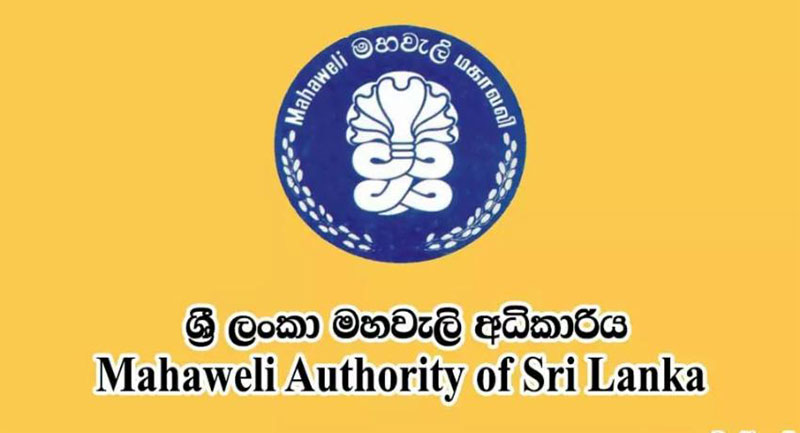
The potential available in lands under Mahaweli Project, which cover about one third of farming areas of the Dry Zone, could easily help the country become self-sufficient in healthy foods, provided it is managed properly. However, at present, the main focus of the Mahaweli Authority of Sri Lanka (MASL) is mainly on Operation & Maintenance of Canal network feeding the farms. Main purpose of the Mahaweli Restructuring & Rehabilitation Project (MRRP) funded by the World Bank in 2000 was to diversify that objective to cover enhancement of agriculture aspects also. System H Irrigation Systems covering about 20,000 Hectares commanded under Kalawewa Tank located in the Anuradhapura District was used as a pilot area to initiate this effort. However, only the Canal Rehabilitation component of the MRRP was attended because of the government policy at that time. Restructuring component is still awaiting to be completed. Only, a strategy called Water Quota was introduced under the MRRP to initiate the restructuring component. However, the management restructuring required addressing the agriculture component expected under MRRP is still not attended.
Propose Strategy
Total length of the canal network which needs seasonal maintenance is about 1,000 Km in a typical large-scale irrigation project such as Kalawewa. Main role of the Resident Project Managers (RPM) appointed to manage such projects should be to enhance the food production jointly with the Farmer Organizations. Therefore, the abbreviation used for RPM should be redefined as Resident Production Manager. The role of a Production Manager is not limited to maintenance of canal networks as adapted presently. In the current production phase, Irrigation projects should be perceived as a Food Producing “Factory” – where water is the main raw material. Farmers as the owners of the factory, play the role of the labour force of the factory. The Production Manager’s focus should be to maximize food production, deviating from Rice Only Mode, to cater the market needs earning profits for the farmers who are the owners of the “factory”. Canal systems within the project area which need regular maintenance are just “Belts” conveying raw materials (water) in a Typical Factory.
Required Management Shift
In order to implement the above management concept, there is a need for a paradigm shift in managing large scale irrigation projects. In the new approach, the main purpose of managing irrigation systems is to deliver water to the farm gate at the right time in the right quantity. It is a big challenge to operate a canal network about 1000 KM long feeding about 20,000 Hectare in a typical Irrigation System such as Kalawewa.
It is also very pathetic to observe that main clients of irrigation projects (farmers providing labor force) are now dying of various diseases caused by indiscriminate use of agrochemicals. Therefore, there is a need to minimize the damages caused to the ecosystems where these food production factories are located. Therefore, the management objectives should also be focused on producing multiple types of organically grown crops, profitably without polluting the soil and groundwater aquifers causing diseases like Kidney Failures.
Proposed Management Structure
Existing management staff should either be trained or new recruitments having Production Engineering background, should be made. Water should be perceived as the most limited input, which needs to be managed profitably jointly with the farming community. Each Production Manager could be allocated a Fixed Volume of water annually, and their performance could be measured in terms of $s earned for the country per Unit Volume of water, while economically upgrading a healthy lifestyle of the farmers by using climate smart agriculture.
In addition to the government salary, the production management staff should also be compensated in the form of incentives, calculated in proportion to income generated by them from their management areas. It should be a Win-Win situation for both farmers as well as officers responsible for managing the food production factory. Operation of the Main Canal to cater flexible needs of each factory is the main responsibility of the Resident Production Manager. In other countries, the term used to measure their performance is $ earned per gallon of water to the country, without damaging the ecosystem.
Recent Efforts
Mahaweli Authority introduced some of the concepts explained in this note during 2000 to 2006, under MRRP. It was done by operating the Distributary canals feeding each block as elongated Village Tanks. It was known as the Bulk Water Allocation (BWA) strategy. Recently an attempt was made to digitize the same concept, by independently arranging funds from ICTA / World Bank. In that project, called Eazy Water, a SMS communication system was introduced, so that they can order water from the Main Reservoir by sending a SMS, when they need rather; than depend on time tables decided by authorities as normally practiced.
Though the BWA was practiced successfully until 2015, the new generation of managers did not continue it beyond 2015.
Conclusion
The recent Cabinet decision to close down the MASL should prompt the MASL officers to reactivate the BWA approach again. Farmer Organisations at the distributary canal level responsible for managing canal networks covering about 400 Hectares can be registered as farmer cooperatives. For example, there are about 50 farmer cooperatives in a typical irrigation project such as Kalawewa. This transformation should be a gradual process which would take at least two years. I am sure the World Bank would definitely fund this project during the transition period because it is a continuation of the MRRP to address the restructuring component which was not attended by them in 2000 because of government policy at that time. System H could be used as a pilot demonstration area. Guidelines introduced under the MRRP could be used as tools to manage the main canal. World Bank funded Agribusiness Value Chain Support with CSIAP (Climate Smart Irrigated Agriculture Project) under the Ministry of Agriculture which is presently in progress could also provide necessary guidelines to initiate this project.
by Eng. Mahinda Panapitiya
Engineer who worked for Mahaweli Project since its inception
-

 Features1 day ago
Features1 day agoStarlink in the Global South
-

 Business2 days ago
Business2 days agoDaraz Sri Lanka ushers in the New Year with 4.4 Avurudu Wasi Pro Max – Sri Lanka’s biggest online Avurudu sale
-

 Business3 days ago
Business3 days agoStrengthening SDG integration into provincial planning and development process
-

 Business2 days ago
Business2 days agoNew SL Sovereign Bonds win foreign investor confidence
-

 Sports4 days ago
Sports4 days agoTo play or not to play is Richmond’s decision
-

 Features1 day ago
Features1 day agoModi’s Sri Lanka Sojourn
-

 Latest News6 days ago
Latest News6 days agoIPL 2025: Rookies Ashwani and Rickelton lead Mumbai Indians to first win
-

 Sports3 days ago
Sports3 days agoNew Zealand under 85kg rugby team set for historic tour of Sri Lanka






